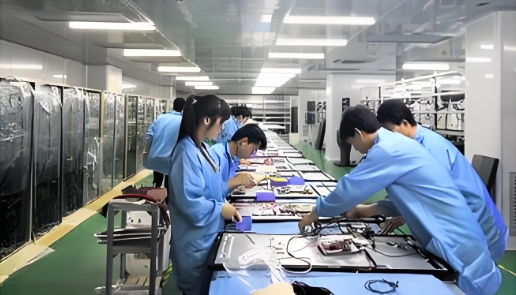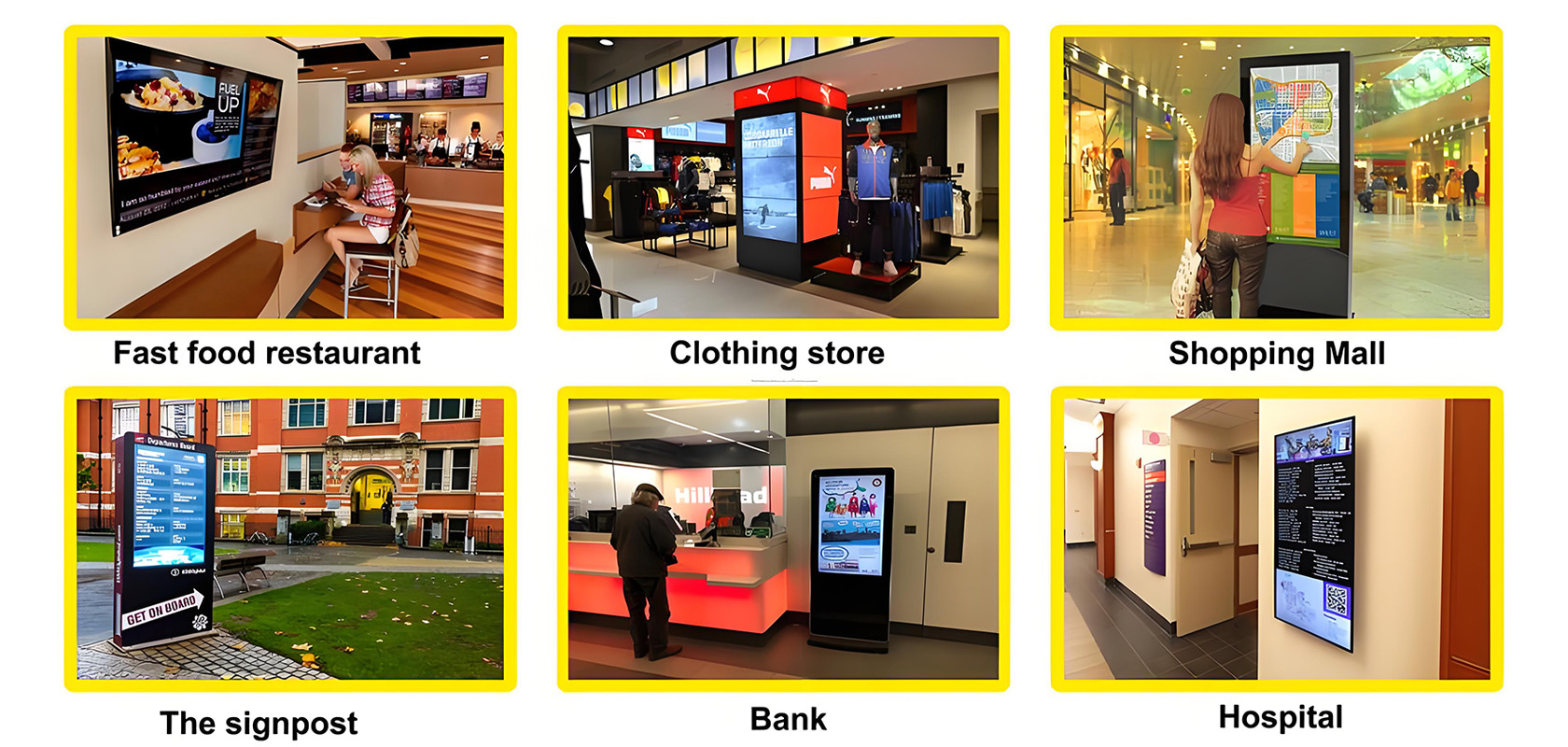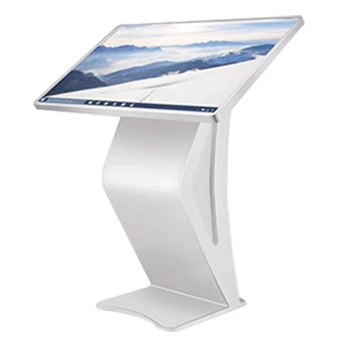Engage Visitors & Monetize Spaces with Interactive Museum Kiosk Touch Screens: Your 2025 Opportunity
Hey there! If you're involved in running a museum or memorial, you know how crucial it is to keep visitors engaged and happy. But let's face it, static displays and old-school audio guides can sometimes fall short in today's digital world. That's where museum kiosk touch screens come into the picture.
In 2025, these interactive displays aren't just a cool tech upgrade; they're becoming a vital tool for enhancing the visitor experience, providing valuable information, and even generating revenue. Think of them as digital docents, wayfinding gurus, and even mini gift shops, all rolled into one sleek touchscreen. Let's dive into how these interactive museum kiosks can be a game-changer for your institution.
Why Museum Kiosk Touch Screens Are a Must-Have in 2025
Museums and memorials are all about storytelling and creating memorable experiences. Touch screen kiosks for museums can take that to a whole new level. Here’s why they’re becoming so popular:
1. Enhanced Visitor Engagement
Let's be real, people love to interact. Interactive museum exhibits powered by touch screens allow visitors to delve deeper into the content at their own pace. They can explore high-resolution images, watch videos, read additional information, and even interact with 3D models. This hands-on approach makes learning more engaging and memorable.
2. Improved Wayfinding and Navigation
Large museums can be overwhelming. Digital wayfinding kiosks for museums provide interactive maps and directions, helping visitors easily find specific exhibits, restrooms, cafes, and exits. This reduces frustration and allows them to make the most of their visit. Think of it as a digital concierge right at their fingertips.
3. Digital Access to Information
Touch screen kiosks can provide access to a wealth of information that might not be feasible with traditional signage. This includes expanded exhibit details, archival materials, behind-the-scenes stories, and even multilingual content, catering to a diverse audience.
4. Monetization Opportunities
Believe it or not, museum kiosks with touch screens can also be a source of revenue. They can be used to:
Sell Tickets and Memberships: Streamline the entry process and offer easy sign-up for memberships.
Promote and Sell Merchandise: Display items from the museum store and allow visitors to make purchases directly from the kiosk.
Accept Donations: Provide a convenient way for visitors to support the museum's mission.
Offer Paid Interactive Experiences: Think virtual tours or interactive games related to the exhibits.
5. Data Collection and Insights
Modern museum interactive kiosks can collect valuable data about visitor behavior, such as popular exhibits, areas of interest, and usage patterns. This information can help museum staff optimize exhibit design, improve visitor flow, and tailor future offerings.
Key Features to Look for in a Museum Kiosk Touch Screen
When choosing a touch screen kiosk for your museum, consider these essential features:
High-Resolution Display: Sharp visuals are crucial for showcasing artifacts and information effectively.
Intuitive User Interface: The software should be easy to navigate for visitors of all ages and tech-savviness.
Durable and Vandal-Resistant Hardware: Museums see a lot of traffic, so the kiosk needs to be robust and able to withstand heavy use.
Reliable Touch Technology: Responsive and accurate touch screens ensure a smooth user experience.
Content Management System (CMS): A user-friendly CMS allows museum staff to easily update and manage the content displayed on the kiosks.
Connectivity Options: Wi-Fi or Ethernet connectivity is necessary for content updates, data collection, and potential online transactions.
Accessibility Features: Consider features like adjustable height, audio output for visually impaired visitors, and compatibility with assistive technologies.
Integration with Existing Systems: The kiosk system should ideally integrate with your ticketing system, membership database, and other relevant platforms.
Spotlight on Leading Museum Kiosk Touch Screen Providers
While a definitive "top" list can vary, here are some well-regarded companies known for providing interactive touch screen solutions for museums:
1.LcdKiosk: Offer a wide range of customizable kiosks known for their durability and reliability, often used in public spaces.
2.ideum: Specializes in large-format interactive displays and touch tables, popular for collaborative museum experiences.
3.Elo Touch Solutions: A long-standing leader in touch screen technology, providing robust and versatile touch screen displays suitable for kiosks.
4.Advanced Kiosks: Offer both standard and custom kiosk designs, with a focus on user-friendliness and functionality.
5.Peerless-AV: Known for their durable and secure outdoor and indoor kiosk enclosures, often integrated with various display technologies.
Real-World Impact: Museums Transforming Visitor Experiences with Kiosks
Let's look at a couple of examples of museums that have successfully integrated museum kiosk touch screens:
Case Study 1: The History Museum's Interactive Timeline
A large history museum implemented several interactive timeline kiosks throughout its exhibits. Visitors could scroll through centuries of history, tap on specific events to learn more through text, images, and videos, and even zoom in on historical documents. This interactive approach significantly increased visitor engagement with the timeline, with many guests spending considerably more time exploring the content compared to traditional static timelines.
Case Study 2: The Art Museum's Digital Docent
An art museum installed touch screen kiosks next to key paintings. These "digital docents" provided information about the artist, the artwork's history and context, and even allowed visitors to explore details of the painting through high-resolution images. The kiosks also offered audio commentary in multiple languages, enhancing the experience for international visitors. The museum reported positive feedback from visitors who appreciated the depth of information available at their fingertips.
Case Study 3: The Science Center's Interactive Exhibits
A science center incorporated numerous interactive touch screen kiosks into its exhibits. These kiosks featured simulations, interactive quizzes, and educational games that allowed visitors, especially children, to learn about scientific concepts in a fun and engaging way. The kiosks became a major draw, increasing dwell time in the exhibits and fostering a more hands-on learning environment.
Leveraging Museum Kiosks for Digital Storytelling and Scene Setting
Museum kiosk touch screens are powerful tools for digital storytelling and creating immersive experiences. Here are some ways they can be used:
Interactive Maps and Guided Tours: Offer themed self-guided tours with interactive maps that lead visitors through specific exhibits.
Augmented Reality Integration: Some advanced kiosks can integrate with AR applications, allowing visitors to overlay digital content onto real-world exhibits through the screen.
Oral History Archives: Provide access to recorded interviews and personal stories related to the museum's collection.
Virtual Reconstructions: Display interactive 3D models and virtual reconstructions of historical sites or artifacts.
Behind-the-Scenes Content: Offer glimpses into the museum's conservation efforts, research, and collection management.
By using interactive kiosks, museums can bring their stories to life in dynamic and engaging ways that resonate with today's audiences.
Planning Your Museum Kiosk Deployment
Implementing museum kiosk touch screens effectively requires careful planning:
1.Define Your Goals: What do you want to achieve with the kiosks? Increased engagement, better wayfinding, revenue generation?
2.Identify Key Locations: Where will the kiosks be most effective? Entrances, key exhibits, high-traffic areas?
3.Develop Engaging Content: The software and content are just as important as the hardware. Focus on creating interactive and informative experiences.
4.Ensure Technical Support: Plan for ongoing maintenance and technical support to keep your kiosks running smoothly.
5.Gather Visitor Feedback: Monitor how visitors are using the kiosks and use their feedback to make improvements.

The Future of Interactive Kiosks in Museums
As technology continues to advance, museum kiosk touch screens will likely become even more sophisticated. We can anticipate features like:
AI-Powered Personalization: Kiosks that can tailor content based on visitor interests and past interactions.
Seamless Mobile Integration: Allowing visitors to interact with the kiosks using their smartphones.
Advanced Analytics: Providing deeper insights into visitor behavior and preferences.
By embracing these technologies, museums can continue to evolve and provide enriching and engaging experiences for their visitors in the years to come.
Making the Smart Investment for Your Museum
Investing in museum kiosk touch screens is an investment in the future of your institution. By enhancing visitor engagement, improving navigation, and even creating new revenue streams, these interactive displays can significantly contribute to the success and sustainability of your museum or memorial. So, take the opportunity in 2025 to explore the possibilities and transform your visitor experience with the power of touch screen technology.We are a manufacturer of museum kiosk touch screen. Welcome to inquire about wholesale prices and customized museum kiosk touch screen.
Application scenarios of digital signage

Tags:
self service kiosk touch kiosk digital signage interactive display interactive touch whiteboard kiosk video wall wall outdoor kiosk IP68 IP67 screen Shopping MallCurrent article link:
https://www.lcdkiosk.com/news/1417.html








